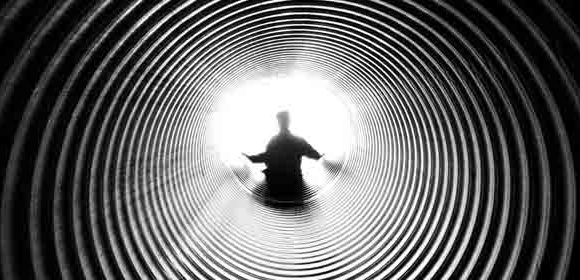In the modern age of mindfulness, manifestation, and spiritual awakening, many seekers find themselves diving deep into the world of crystals, affirmations, light work, and high vibrations. And while this path can be enlightening and transformative, it also comes with subtle pitfalls. One of the most common and least discussed is the trap of spiritual bypassing.
Though often well-intentioned, spiritual bypassing can hinder growth, delay healing, and prevent us from living in authentic alignment with our soul. To grow spiritually, we must learn to distinguish between true healing and bypassing pain with a spiritual mask.
Let’s unpack what spiritual bypassing really is, how to recognise it, and how to choose authentic healing instead.
What Is Spiritual Bypassing?
Coined by psychologist John Welwood in the 1980s, spiritual bypassing refers to the use of spiritual beliefs, practices, or language to avoid dealing with unresolved emotional issues, psychological wounds, or painful realities.
At first glance, it may seem harmless or even enlightened. After all, isn’t it spiritual to choose love over fear? To stay positive? To see the soul in every person? But when these truths are used to escape rather than embrace the full human experience, we enter dangerous territory.
Common examples of spiritual bypassing include:
- Saying “everything happens for a reason” to avoid processing grief or trauma
- Using meditation or yoga to disconnect from emotions rather than feel them
- Overemphasising the “light” while ignoring the “shadow”
- Dismissing someone’s pain by urging them to “raise their vibration”
- Repeating mantras or affirmations without addressing the deeper emotional patterns beneath them
- Avoiding therapy or inner work in favour of only spiritual practices
In essence, spiritual bypassing is when spirituality is used as a shield, instead of a sword to cut through illusion and reach truth.
Why It’s So Common Among Spiritual Seekers
Most people don’t bypass intentionally. It often happens subconsciously, especially when someone is in pain or feeling overwhelmed. Spiritual tools can bring relief, hope, and meaning during difficult times. But when used prematurely or superficially, they become a distraction rather than a doorway.
In spiritual communities, there is often pressure to “stay high-vibe,” be endlessly forgiving, and act as if pain doesn’t exist. But this denies a fundamental truth: we are both human and divine. Growth doesn’t come from escaping the human. It comes from honouring it.
Authentic Healing: Facing the Shadow with Love
Authentic healing is the opposite of bypassing. It’s not always pretty. It’s not always peaceful. Sometimes it looks like tears, anger, confusion, or confronting the deepest parts of yourself. But this work – the raw, real, messy inner work – is where transformation is born.
True healing means feeling, not fleeing
When you choose to authentically heal, you allow all parts of yourself, light and shadow, to be seen, heard, and integrated. You don’t rush to “fix” yourself. You become willing to sit with pain, listen to your wounds, and uncover the root causes of your patterns.
This kind of healing often involves:
- Inner child work
- Shadow integration
- Therapy or trauma-informed support
- Breathwork or body-based healing
- Honest self-reflection and journaling
- Choosing discomfort over denial
- Asking: “What is this emotion here to teach me?”
Authentic healing asks us to move beyond the spiritual ego and into radical honesty and self-compassion.
How to Recognise Spiritual Bypassing in Yourself
Self-awareness is the first step toward healing. Ask yourself:
- Am I avoiding certain emotions by “thinking positive”?
- Do I use spiritual ideas to judge others or feel superior?
- Do I feel guilt or shame when I experience low energy or negative emotions?
- Have I dismissed someone’s pain (or my own) with spiritual clichés?
- Am I overly focused on being “light” while ignoring my triggers and wounds?
If you notice any of these, don’t shame yourself. Awareness is a sacred gift. The moment you recognise bypassing, you gain the power to choose a more honest path.
Spirituality and Healing Can Work Together
It’s important to remember that spiritual tools are powerful. Meditation, prayer, ritual, energy healing, and affirmations all have their place, but they must be used in tandem with emotional honesty and psychological healing.
Use spirituality to support your healing, not suppress your truth.
For example:
- Use meditation to listen to what’s beneath the anxiety, not just quiet it
- Use affirmations after you’ve acknowledged and held space for your pain
- Use prayer not just to ask for peace, but to ask for the courage to face what’s uncomfortable
- Use high-vibe thinking with shadow work, not instead of it
This is what it means to walk the middle path, honouring both our humanity and divinity, rather than choosing one over the other.
The Beauty of Doing the Work
Choosing authentic healing over bypassing is a brave act. It means you are willing to face yourself, to love the unlovable parts, and to grow in integrity. It’s not always easy, but it’s always worth it.
When we do the real work:
- Our relationships deepen
- Our intuition sharpens
- Our manifestations become more aligned
- Our inner peace becomes more grounded
- And we finally feel safe in our own skin
You no longer seek healing as a way to be “better” you begin to love yourself as you are, while still being open to becoming all you can be.
In Closing: The True Path of the Seeker
The spiritual path is not about escaping life. It’s about entering it fully. It’s about choosing truth over comfort, authenticity over illusion, and healing over hiding.
So the next time you feel tempted to bypass pain with a spiritual phrase, pause. Breathe. Ask: What am I really feeling? What does this part of me need?
The answers may surprise you, but they’ll also set you free.
For more soul-level guidance, shadow work tools, and authentic spiritual wisdom, stay connected at www.spiritconnection.co.za, your sacred space for conscious healing.








